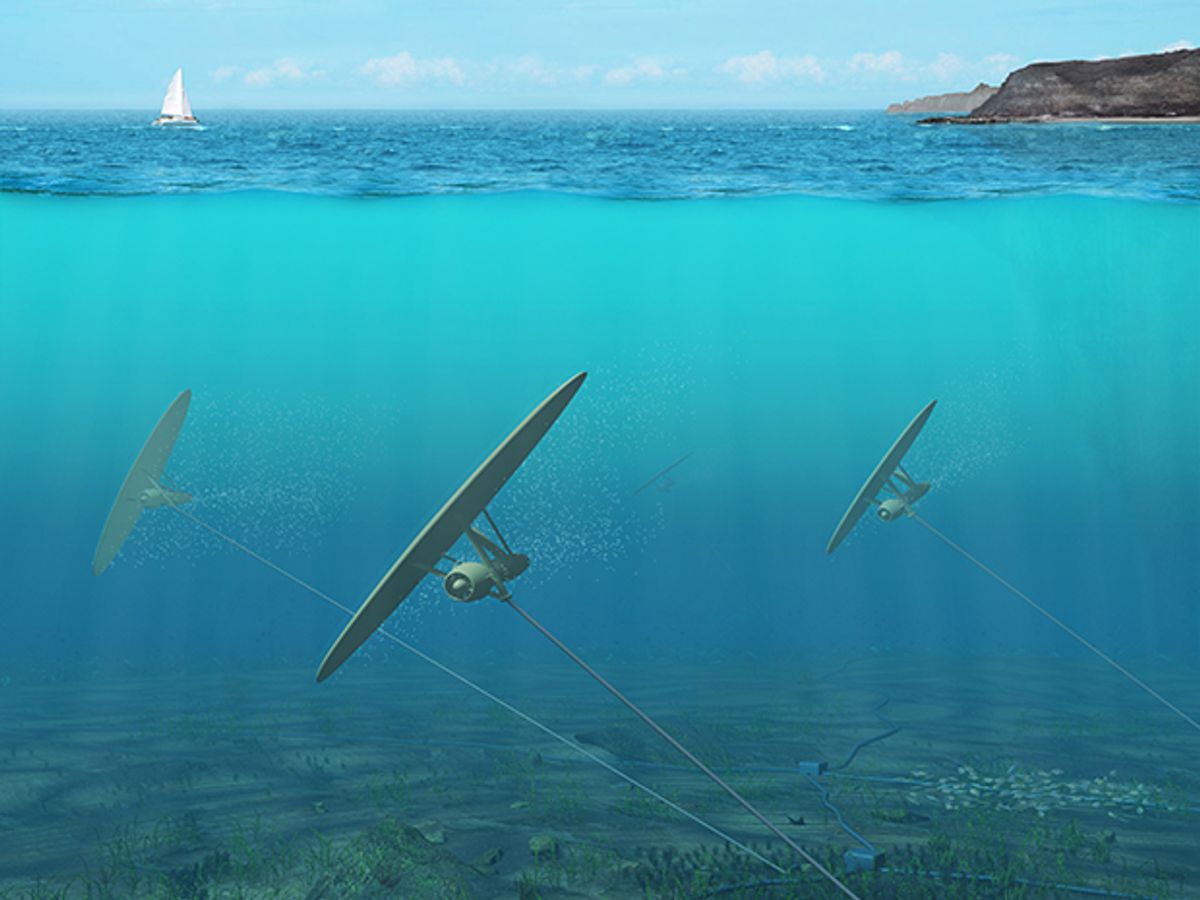A kite with a three-meter wingspan has just started to produce electricity in a pilot project off the coast of Northern Ireland.
The technology, dubbed Deep Green, consists of a wing with a gearless turbine mounted underneath that is tethered to the ocean floor. As the tide flows over the wing, it glides through the water and the turbine rotates. The tether also contains the unit's power and communication cables. For the pilot, there is an offshore control room in the inlet. The kites don't just float along anywhere they please—operators send them along a controlled trajectory to maximize energy output.
Deep Green can take advantage of lower velocity currents than most tidal technologies (less than 2.5 meters per second), according to Minesto, the company that makes the kites. Minesto hopes to field a 3-megawatt array in 2015.
Although kite arrays could potentially be deployed in more locations than other tidal turbines, all tidal and wave technologies face considerable challenges, such as surviving in harsh, salty waters and being cost-competitive with other renewable energy options.
The first tidal turbine to produce power for a utility in the United States started operating just last year. Other U.S. projects, such as turbines in New York City’s East River, have not been able to withstand the harsh and powerful marine environment.
The United Kingdom is jockeying to solve the technical and cost issues associated with tidal and wave power. The Scottish government has the Saltire Prize, which will award $15.8 million in 2017 to one of the wave and tidal energy companies competing for the prize.
Minesto claims it will be able to compete on cost—not only with other renewable energy technologies, but also with conventional energy sources.
Photos: Minesto




